
Concept explainers
(a)
Interpretation: The organic product that is formed in the given reaction is to be determined.
Concept introduction: The various organic reactions form different organic products with the help of the variety of reagents. Some of the organic compounds are formed by the characteristic action of the various
Answer to Problem 29.64P
The organic product of the given reaction is,
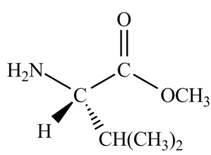
Explanation of Solution
The product formed by the reaction of the given amino acid compound with methanol in the presence of an acid is shown as,

Figure 1
On reaction of
The organic product of the given reaction is shown in Figure 1.
(b)
Interpretation: The organic product that is formed in the given reaction is to be determined.
Concept introduction: The various organic reactions form different organic products with the help of the variety of reagents. Some of the organic compounds are formed by the characteristic action of the various functional groups present in them.
Answer to Problem 29.64P
The organic product of the given reaction is,
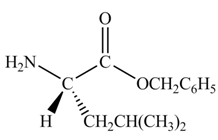
Explanation of Solution
The product formed by the reaction of the given amino acid compound with benzyl alcohol in the presence of an acid is shown as,

Figure 2
On reaction of carboxylic acid group of this amino acid compound with benzyl alcohol and acid, benzyl ester group is placed at the carboxylic group site to form the desired product.
The organic product of the given reaction is shown in Figure 2.
(c)
Interpretation: The organic product that is formed in the given reaction is to be determined.
Concept introduction: The various organic reactions form different organic products with the help of the variety of reagents. Some of the organic compounds are formed by the characteristic action of the various functional groups present in them.
Answer to Problem 29.64P
The organic product of the given reaction is,
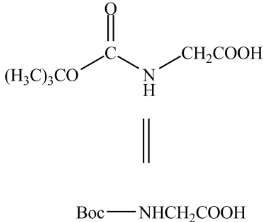
Explanation of Solution
The product formed by the reaction of the given amino acid compound with
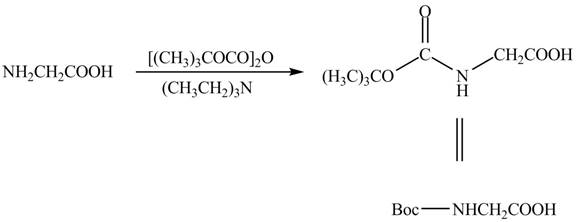
Figure 3
On reaction of amino group of this amino acid compound with
The organic product of the given reaction is shown in Figure 3.
(d)
Interpretation: The organic product that is formed in the given reaction is to be determined.
Concept introduction: The various organic reactions form different organic products with the help of the variety of reagents. Some of the organic compounds are formed by the characteristic action of the various functional groups present in them.
Answer to Problem 29.64P
The organic product of the given reaction is,
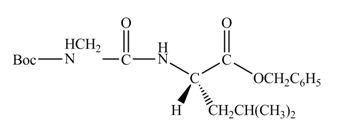
Explanation of Solution
The product formed by the reaction of product formed in (b) with the product formed in (c) in the presence of DCC is shown as,
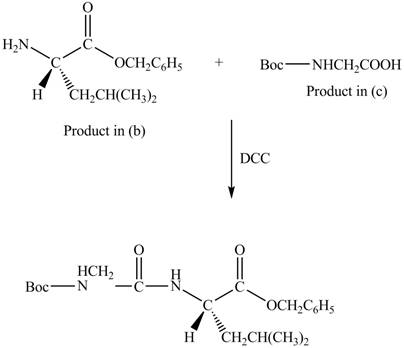
Figure 4
The carboxylic group gets activated by the DCC for the nucleophilic attack which prepare
The organic product of the given reaction is shown in Figure 4.
(e)
Interpretation: The organic product that is formed in the given reaction is to be determined.
Concept introduction: The various organic reactions form different organic products with the help of the variety of reagents. Some of the organic compounds are formed by the characteristic action of the various functional groups present in them.
Answer to Problem 29.64P
The organic product of the given reaction is,
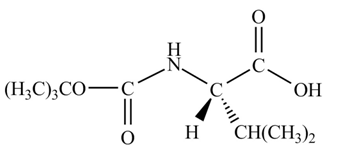
Explanation of Solution
The product formed by the reaction of amide compound with
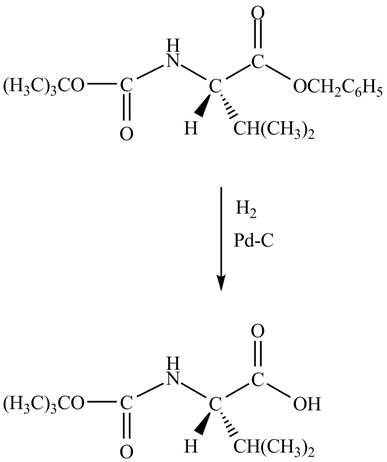
Figure 5
The reaction of amide compound with
The organic product of the given reaction is shown in Figure 5.
(f)
Interpretation: The organic product that is formed in the given reaction is to be determined.
Concept introduction: The various organic reactions form different organic products with the help of the variety of reagents. Some of the organic compounds are formed by the characteristic action of the various functional groups present in them.
Answer to Problem 29.64P
The organic product of the given reaction is,
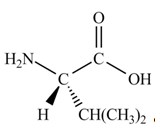
Explanation of Solution
The product formed by the reaction of amide compound with

Figure 6
The reaction of amide compound with
The organic product of the given reaction is shown in Figure 6.
(g)
Interpretation: The organic product that is formed in the given reaction is to be determined.
Concept introduction: The various organic reactions form different organic products with the help of the variety of reagents. Some of the organic compounds are formed by the characteristic action of the various functional groups present in them.
Answer to Problem 29.64P
The organic product of the given reaction is,
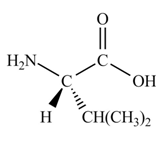
Explanation of Solution
The product formed by the reaction of product formed in (e) with

Figure 7
The reaction of amide compound with
The organic product of the given reaction is shown in Figure 7.
(h)
Interpretation: The organic product that is formed in the given reaction is to be determined.
Concept introduction: The various organic reactions form different organic products with the help of the variety of reagents. Some of the organic compounds are formed by the characteristic action of the various functional groups present in them.
Answer to Problem 29.64P
The organic product of the given reaction is,
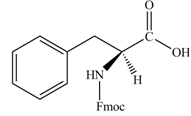
Explanation of Solution
The product formed by the reaction of amino acid compound with
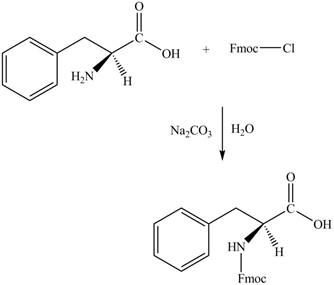
Figure 8
The reaction of amino acid compound with
The organic product of the given reaction is shown in Figure 8.
Want to see more full solutions like this?
Chapter 29 Solutions
Organic Chemistry-Package(Custom)
- Please help me solve this reaction.arrow_forwardIndicate the products obtained by mixing 2,2-dimethylpropanal with acetaldehyde and sodium ethoxide in ethanol.arrow_forwardSynthesize 2-Ethyl-3-methyloxirane from dimethyl(propyl)sulfonium iodide using the necessary organic or inorganic reagents. Draw the structures of the compounds.arrow_forward
- Synthesize 2-Hydroxy-2-phenylacetonitrile from phenylmethanol using the necessary organic or inorganic reagents. Draw the structures of the compounds.arrow_forwardSynthesize N-Methylcyclohexylamine from cyclohexanol using the necessary organic or inorganic reagents. Draw the structures of the compounds.arrow_forwardSynthesize N-Methylcyclohexylamine from cyclohexanol using the necessary organic or inorganic reagents. Draw the structures of the compounds.arrow_forward
- If possible, please provide the formula of the compound 3,3-dimethylbut-2-enal.arrow_forwardSynthesize 1,4-dibromobenzene from acetanilide (N-phenylacetamide) using the necessary organic or inorganic reagents. Draw the structures of the compounds.arrow_forwardIndicate the products obtained by mixing (3-oxo-3-phenylpropyl)triphenylphosphonium bromide with sodium hydride.arrow_forward
- We mix N-ethyl-2-hexanamine with excess methyl iodide and followed by heating with aqueous Ag2O. Indicate the major products obtained.arrow_forwardIndicate the products obtained by mixing acetophenone with iodine and NaOH.arrow_forwardIndicate the products obtained by mixing 2-Propanone and ethyllithium and performing a subsequent acid hydrolysis.arrow_forward
 ChemistryChemistryISBN:9781305957404Author:Steven S. Zumdahl, Susan A. Zumdahl, Donald J. DeCostePublisher:Cengage Learning
ChemistryChemistryISBN:9781305957404Author:Steven S. Zumdahl, Susan A. Zumdahl, Donald J. DeCostePublisher:Cengage Learning ChemistryChemistryISBN:9781259911156Author:Raymond Chang Dr., Jason Overby ProfessorPublisher:McGraw-Hill Education
ChemistryChemistryISBN:9781259911156Author:Raymond Chang Dr., Jason Overby ProfessorPublisher:McGraw-Hill Education Principles of Instrumental AnalysisChemistryISBN:9781305577213Author:Douglas A. Skoog, F. James Holler, Stanley R. CrouchPublisher:Cengage Learning
Principles of Instrumental AnalysisChemistryISBN:9781305577213Author:Douglas A. Skoog, F. James Holler, Stanley R. CrouchPublisher:Cengage Learning Organic ChemistryChemistryISBN:9780078021558Author:Janice Gorzynski Smith Dr.Publisher:McGraw-Hill Education
Organic ChemistryChemistryISBN:9780078021558Author:Janice Gorzynski Smith Dr.Publisher:McGraw-Hill Education Chemistry: Principles and ReactionsChemistryISBN:9781305079373Author:William L. Masterton, Cecile N. HurleyPublisher:Cengage Learning
Chemistry: Principles and ReactionsChemistryISBN:9781305079373Author:William L. Masterton, Cecile N. HurleyPublisher:Cengage Learning Elementary Principles of Chemical Processes, Bind...ChemistryISBN:9781118431221Author:Richard M. Felder, Ronald W. Rousseau, Lisa G. BullardPublisher:WILEY
Elementary Principles of Chemical Processes, Bind...ChemistryISBN:9781118431221Author:Richard M. Felder, Ronald W. Rousseau, Lisa G. BullardPublisher:WILEY





